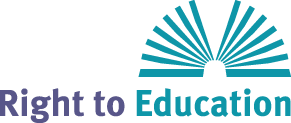Marginalised groups are those groups who encounter significant barriers in enjoying the right to education. If you are monitoring the right to education of a particular marginalised group, it is important that you collect disaggregated data for your chosen indicators, particularly for outcome indicators but also some process indicators. Disaggregated data can reveal whether disparities and /or inequalities exist between levels of enjoyment of the right to education across groups.
For more information, see Step 2.2 – The importance of disaggregated data and Step 3.2 – Disaggregated data.
If you are working on marginalised groups within marginalised groups (intersectionality), eg indigenous girls, we recommend that you make separate queries for each group, so instead of selecting Women and Girls and Indigenous Peoples and Minorities, select Women and Girls in a separate query to Indigenous Peoples and Minorities. This will give you lists of indicators that are relevant to monitoring both groups. Currently our list of indicators has not been fully developed and may not have specific indicators (except general outcome indicators for which data will need to be disaggregated by the desired levels) to monitor intersectionality. Over time we will be adding new indicators to fill this gap.
For indicators on Child Soldiers, see Armed Conflict (Including Child Soldiers) under Contexts.
The list below is not exhaustive.
